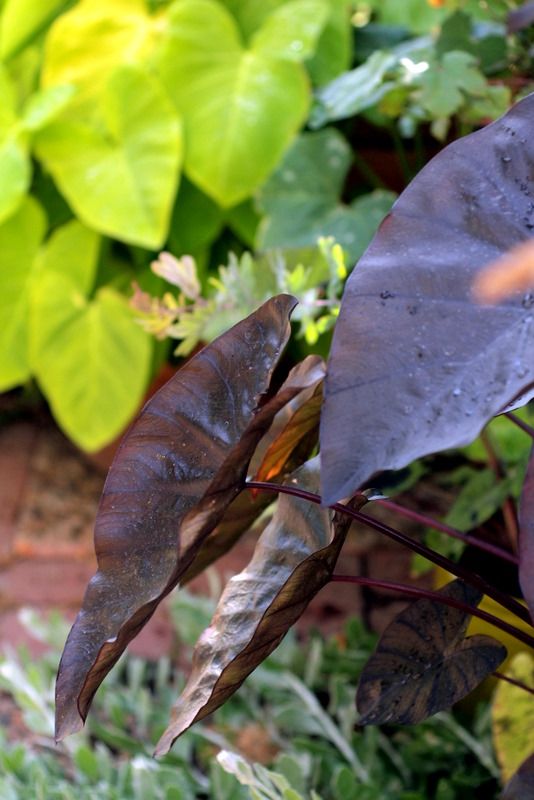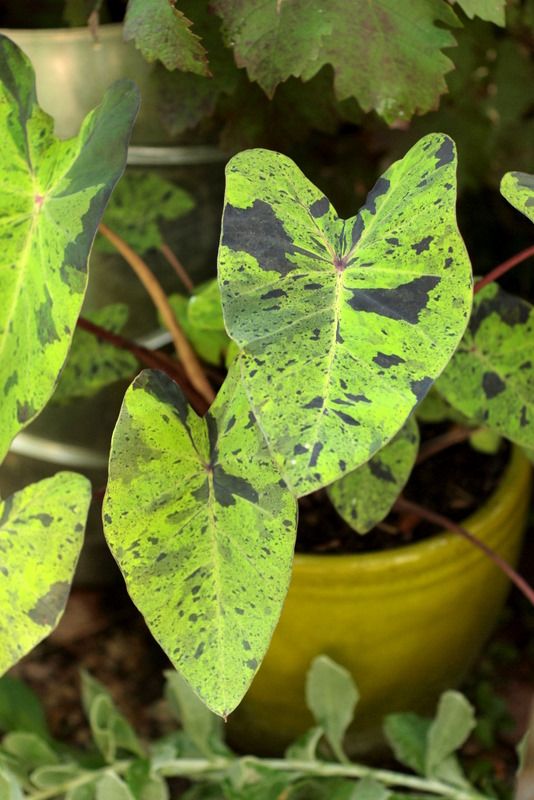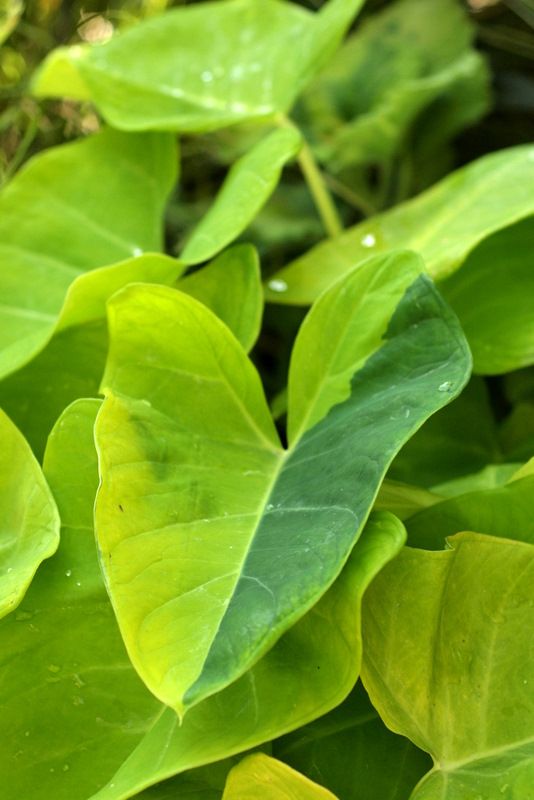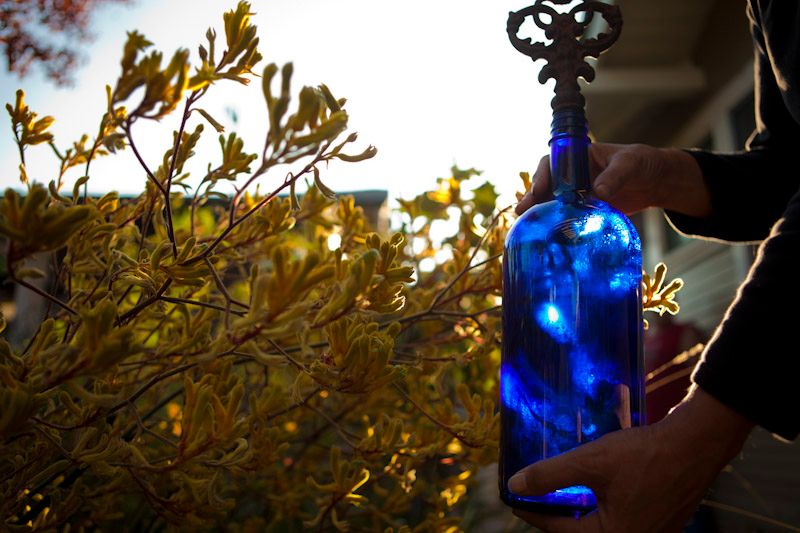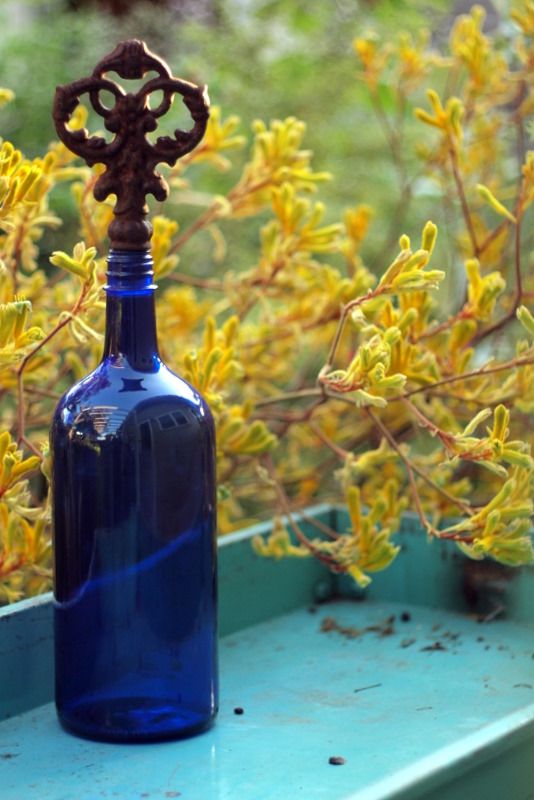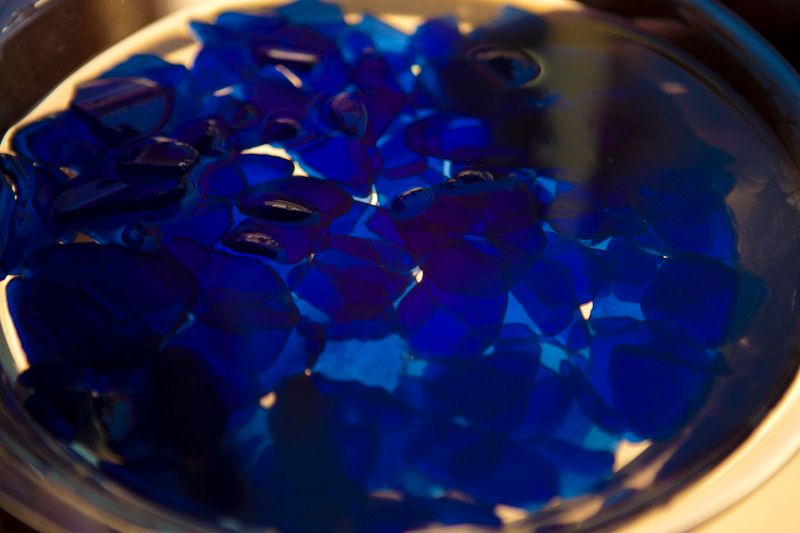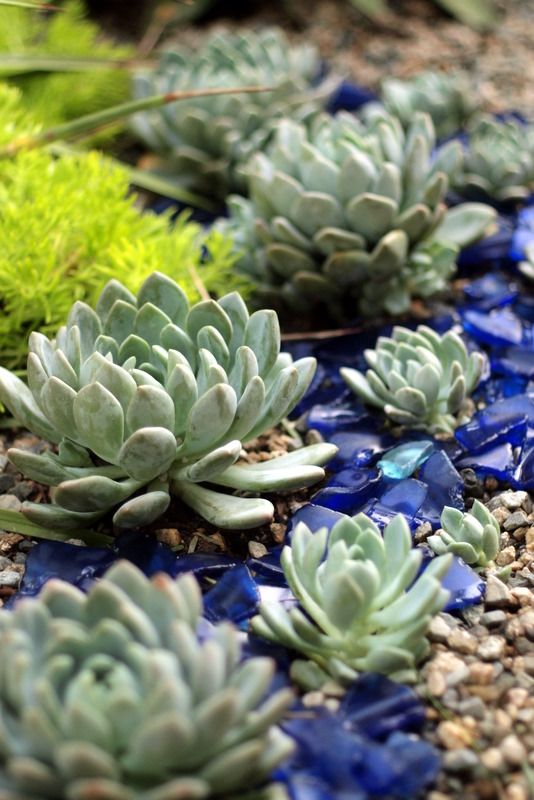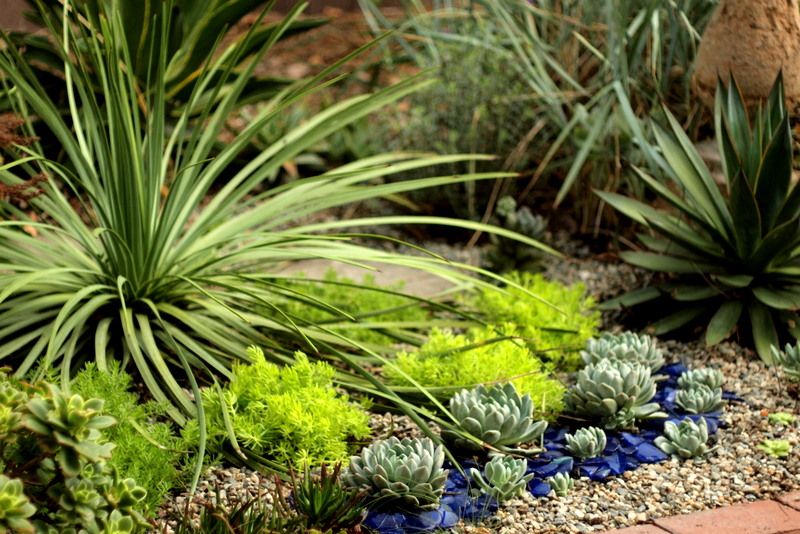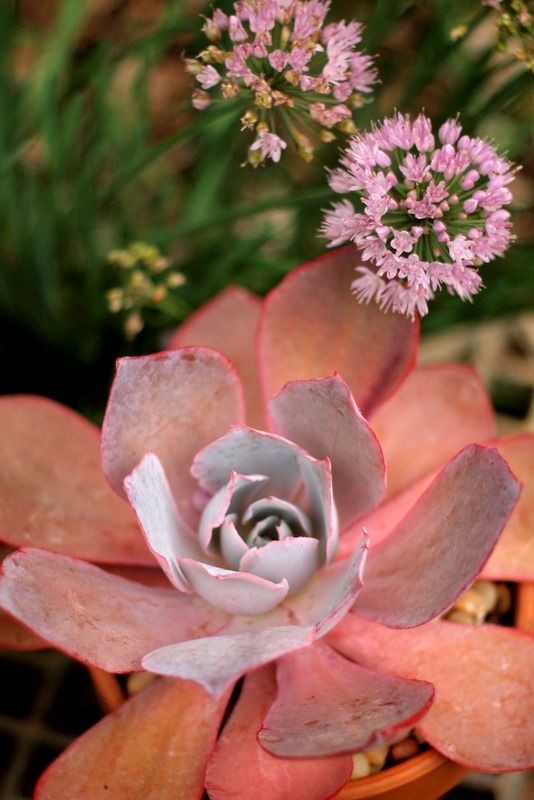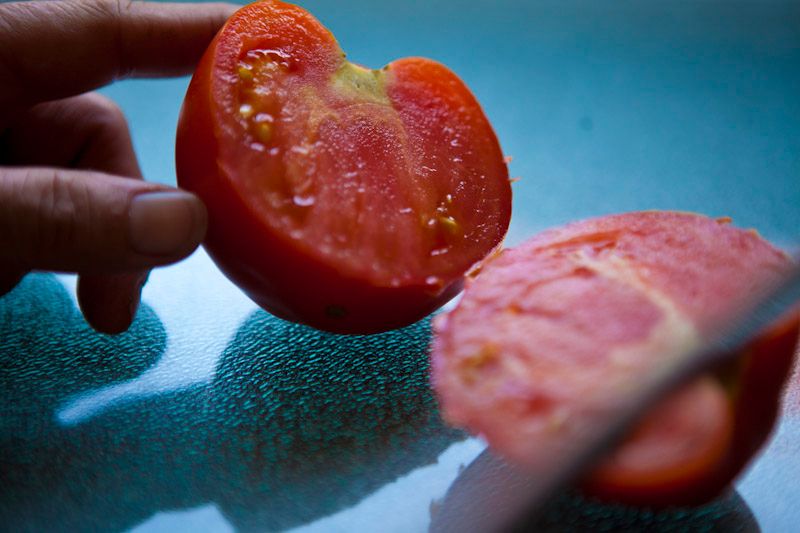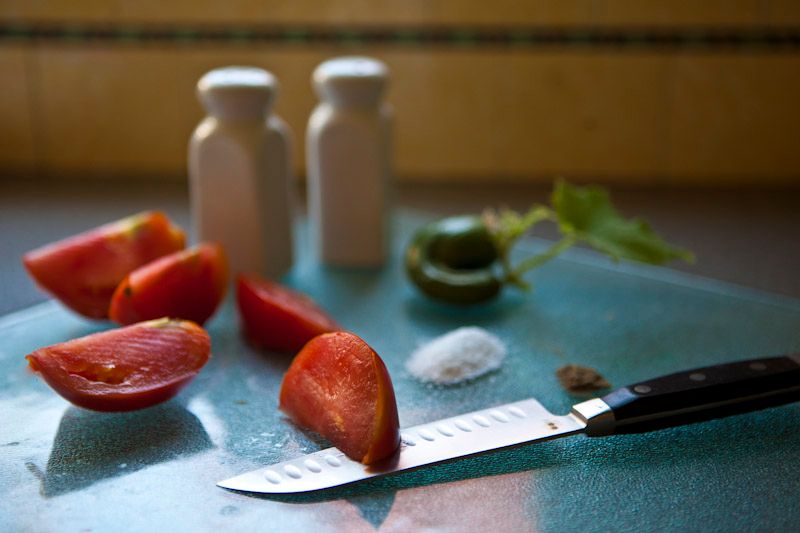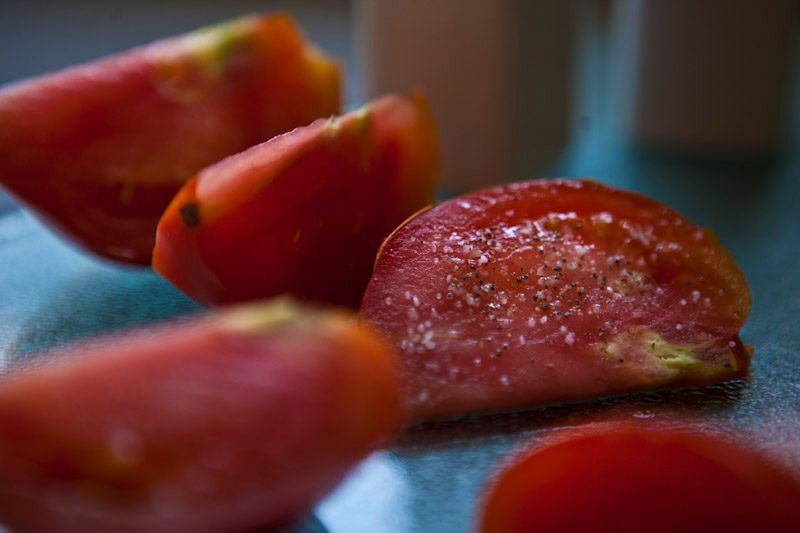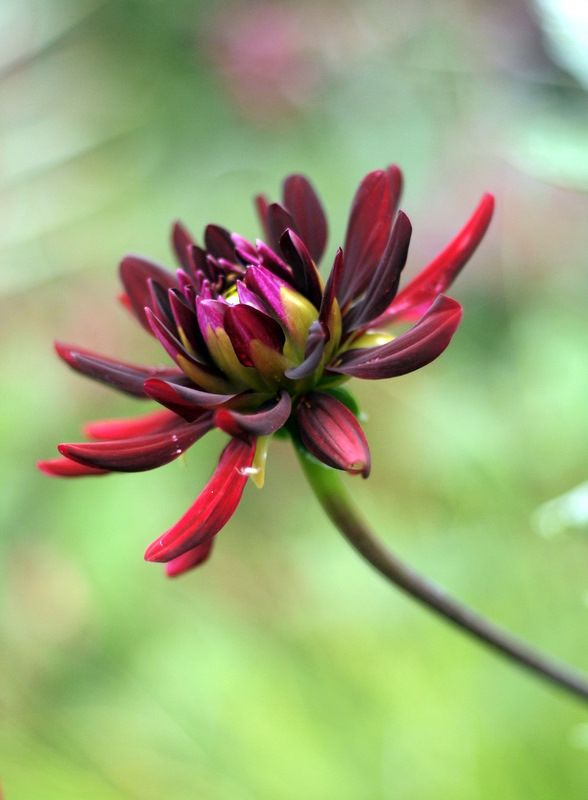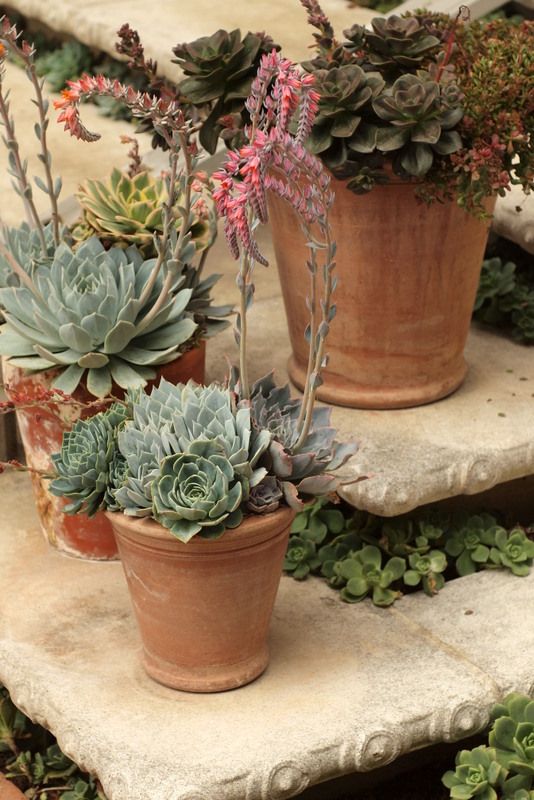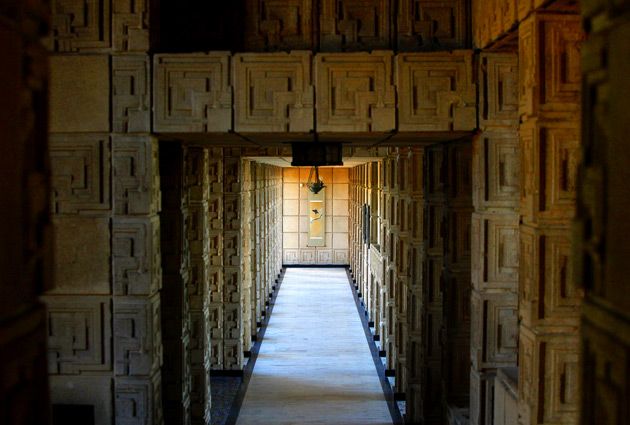The begonia genus is so vast, that the best approach is to find a guide or mentor to help wade through the many species and hybrids to find the really interesting plants and those most suitable to your tastes and growing conditions, whether those conditions might be outdoors year-round or must necessarily include spending winter indoors or under greenhouse care. I haven’t found a guide yet, or joined the local begonia society, or taken even the small amount of trouble to buy a book, so my lazy approach has been hit-and-miss. I blame this slothful, indiscriminate approach on living in zone 10, knowing that at the very least, whatever cultural mistakes I may make, any begonia I trial will be in no danger from frost. As far as parameters, I’m more interested in the leaves than flowers, with one of my few guidelines being to avoid altogether begonias with pink flowers. The trifecta of white petals, yellow anthers, and green leaves to me is botanical perfection. As in Japanese anemones, calla lilies, regal lilies, Magnolia grandiflora, Romneya coulterii, Carpenteria californica, Cistus ‘Bennett’s White,’ and so on. None of which I grow at this time. But I do grow Begonia dregei var. partita, which came labeled as Begonia partita, a South African species which carries these bracingly clean colors on a plant whose dainty charms are always a challenge for me to convey via photos.
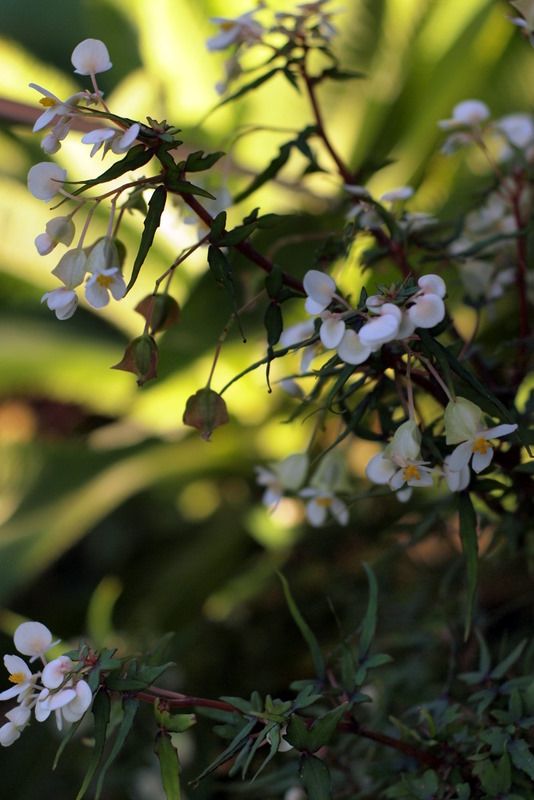
Although my zone 10 is as good a place as any to grow begonias, it’s only been the past few years that I’ve really started paying attention to this genus. And while the selection at local nurseries is slowly improving, it’s still mostly the common bedding forms, the semperflorens or “wax” begonias, that get most of the bench space, when the protean world of begonias has so much more to offer. As with agaves, the really great plants are to be found with specialist growers. (Kartuz Greenhouses has a wonderful selection.) There’s the fantastical hybrids of the rhizomatous begonias, tuberous begonias like B. boliviensis, sutherlandii, and the relatively hardy B. grandis. Species like B. luxurians, the Palm-leaf begonia, and its hybrids like ‘Paul Hernandez.’
The hit-and-miss approach does turn up some losers, but as luck would have it I have stumbled onto what’s turned out to be not just a good begonia but a very good garden plant, Begonia partita, which is both evergreen, not requiring a dormancy period, and doesn’t mind conditions on the dry side, as occasionally can happen with a slightly haphazard summer watering regimen. What I didn’t know when I bought it, being more attracted by the tiny, ivy-like leaves, was that this begonia is caudiciform, forming a swollen base or caudex, and for this reason is often grown as a bonsai specimen. What this means to me is that it’s an amazingly tough plant for summer containers. Closeup of swollen stems:
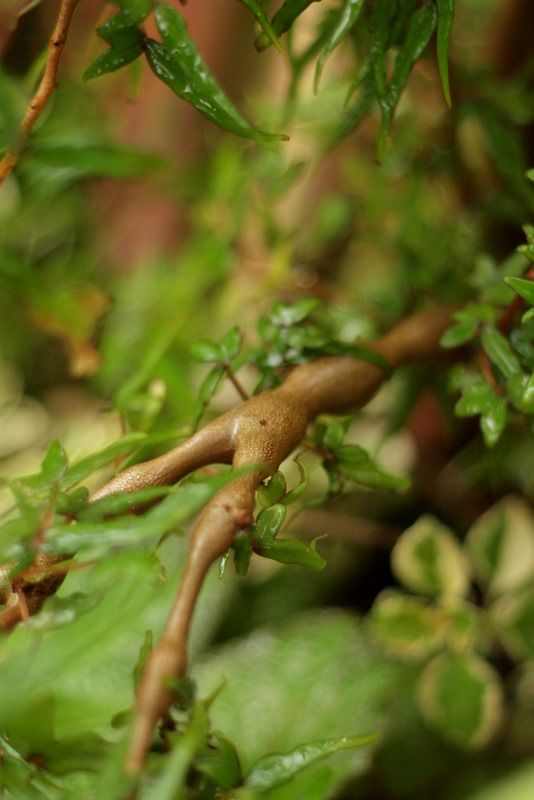
Also known as the Maple-leaf Begonia, it flowers prolifically and spills and mingles nicely amongst other summer growers in containers.
I doubt I’ll ever give it the full bonsai treatment, though, highlighting the swollen stems and caudex, but that water-retention strategy makes this dainty number amazingly easy to grow. Which gives me a boost of confidence as I dabble in this huge genus, knowing it contains gems like Begonia partita.



